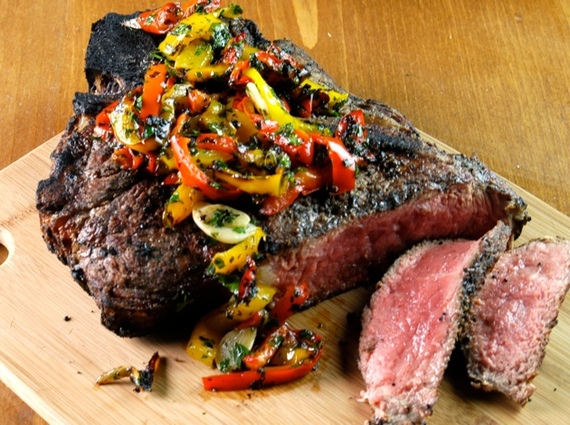Is it done yet? When it comes to grilling or smoking, that's the, er, burning question. Even the most seasoned grillers and smokers sometimes experience a twinge of uncertainty when it comes to gauging the doneness of a particular meat or seafood.
One of our missions at BarbecueBible.com is to help you take the guesswork out of grilling. Here are ten tests you can use now to tell exactly when the food on your grill is ready.
- The cut test: Disparaged by some food writers and practiced by just about everyone else. Using the tip of a paring knife, make a small slit in a steak or chop (ideally on the side that will wind up on the bottom) and look at the center to check for doneness. This technique violates the integrity of the meat—use it sparingly. It can also lead to some false doneness identification, as the meat at the cut may look more well-done than it actually is.
--A rare steak or chop will feel soft—even squishy.
--A medium-rare steak will feel yielding—with just the slightest resistance.
--A medium steak will feel gently yielding—somewhere between soft and half resistant.
--A well-done steak will feel firm with just the slightest yield.
There's an old rule of thumb (literally) to help you gauge the resistance. Make the "OK" sign by pressing the tip of your forefinger to the tip of your thumb. Press the base of your thumb with the forefinger of the opposite hand. That's the soft squishy feel of a rare steak.
Now move the tip of your middle finger to the tip of your thumb. Again, press the base of your thumb with the forefinger of the opposite hand. It should offer slightly more resistance—the feel of a medium-rare steak.
For medium, press the tip of your ring finger to the tip of your thumb. The flesh at the base of your thumb should feel half yielding, half firm.
For well-done, press the tip of your little finger to the tip of your thumb. The flesh at the base of your thumb should feel firm and unyielding.
SIGN UP for Steven Raichlen's UP IN SMOKE newsletter to learn more about barbecue!
Steven Raichlen is the author of the Barbecue! Bible cookbook series and the host of Primal Grill on PBS. His web site is BarbecueBible.com.
